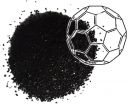No link found between bladder cancer and use of pioglitazone or rosiglitazone, Avandia
2014-12-04
(Press-News.org) Some previous studies have linked the diabetes medication pioglitazone to bladder cancer. However a new study − including more than one million people in six populations worldwide − has found no link between either pioglitazone or rosiglitazone (also known as Avandia) and bladder cancer. The new study is published in Diabetologia (the journal of the European Association for the Study of Diabetes), and is by Dr Samira Bell, Professor Helen Colhoun and Mr Danny Levin, University of Dundee, UK, and colleagues from the International Diabetes and Cancer Research Collaboration.
Bladder cancer is the ninth most common cancer in the world, with 430,000 new cases diagnosed in 2012. Europe and North America have the highest incidence of bladder cancer, with an even higher incidence in people with diabetes.
Bladder tumours overexpress a natural part of the cell machinery, a transcription factor in the cell nucleus known as 'peroxisome proliferator-activated receptor gamma' (or PPARγ) that is found in the urothelium (the lining of the urinary tract). Both pioglitazone and rosiglitazone are part of the thiazolidinediones (TZDs) class of drugs, which act as PPARγ agonists, meaning they induce the same action as PPARγ. They are used in the treatment of type 2 diabetes, however their use, has been questioned owing to safety concerns, including preclinical studies showing male rats overexposed to pioglitazone were at increased risk of bladder cancer.
Observational studies in humans have observed an increased risk of bladder cancer in patients using pioglitazone, leading to withdrawal of the drug in France and Germany. The US Food and Drug Administration (FDA) and European Medicines Agency (EMA) have also advised that the drug not be used in patients with current or previous bladder cancer. However other studies have published contradictory results. The authors of this new work say that studies that showed an increased risk could be biased in certain ways, for example if those who were destined to be given pioglitazone were already at higher risk of bladder cancer (so-called allocation bias). The authors of this new study used a different approach that makes allocation bias very unlikely. Other possible explanations are that studies that detected an increased risk might have done so if those given pioglitazone were subsequently more likely to have bladder cancer detected, for example if their urine was tested more often (so-called detection bias).
In this new study, the authors aimed to address the limitations of previous observational studies by measuring the effect of exposure to pioglitazone on bladder cancer risk across several cohorts. They gathered prescription, cancer and mortality data from people with type 2 diabetes from six populations across the world: British Columbia (Canada); Finland, Manchester (UK), Rotterdam (Netherlands), Scotland, and the UK Clinical Practice Research Datalink (covering 566 general practices in the UK). Data from each centre were used to model the effect of cumulative drug exposure on bladder cancer incidence, and the data were then pooled for further analysis. Data were collated on 1.01 million persons over 5.9 million person-years. There were 3,248 cases of incident bladder cancer, with only 117 cases in those patients ever exposed to pioglitazone. The median duration of follow-up was 4.0 to 7.4 years.
Overall, the authors found no evidence for any association between cumulative exposure to pioglitazone and bladder cancer in men (rate ratio [RR] per 100 days of cumulative exposure, 1.01) or women (RR 1.04) after adjustment for age, calendar year, diabetes duration, smoking and any ever use of pioglitazone. No association was observed between rosiglitazone and bladder cancer in men (RR 1.01) or women (RR 1.00). In this study, the authors were looking to see if there was a dose-response relationship between pioglitazone and risk of bladder cancer, and found that this risk did not increase with longer exposure in users of pioglitazone.
The authors say: "This analysis, to our knowledge, is the only one to use identical methodology across international centres involving a large number of diabetic patients."
They conclude: "In summary, our large international analysis does not support a causal effect of pioglitazone on bladder cancer, thus contradicting previous studies deemed to have proven this relationship. To fully resolve this controversy, future analyses are needed, involving longer follow-up of exposed persons and using methods to minimise allocation bias."
INFORMATION:
ELSE PRESS RELEASES FROM THIS DATE:
2014-12-04
Children born prematurely are at an increased risk of flu-related complications, despite not being identified as an "at risk" group in UK, USA, or WHO guidelines, and should be a priority group for the seasonal flu vaccination, new research published in The Lancet Respiratory Medicine suggests.
"Until now, guidelines highlighting groups at greater risk of developing complications from influenza, such as pneumonia, have been based on consensus opinion rather than on systematic assessment of the evidence"*, explains Dr Kay Wang from the University of Oxford in the UK. ...
2014-12-04
Researchers at the National Institutes of Health have found a duplication of a short stretch of the X chromosome in some people with a rare disorder that causes excessive childhood growth. They believe that a single gene within the region likely has a large influence on how much children grow. The research comes from a lab at NIH's Eunice Kennedy Shriver National Institute of Child Health and Human Development (NICHD), which seeks to understand growth.
"Finding the gene responsible for childhood overgrowth would be very helpful, but the much wider question is what ...
2014-12-04
HOUSTON - (Dec. 3, 2014) - Rice University scientists have discovered an environmentally friendly carbon-capture method that could be equally adept at drawing carbon dioxide emissions from industrial flue gases and natural gas wells.
The Rice lab of chemist Andrew Barron revealed in a proof-of-concept study that amine-rich compounds are highly effective at capturing the greenhouse gas when combined with carbon-60 molecules.
The research is the subject of an open-access paper today in Nature's online journal Scientific Reports.
"We had two goals," Barron said. "One ...
2014-12-03
The longer surgery lasts the more prone patients appear to be to develop blood clots (venous thromboembolisms, VTE), according to a report published online by JAMA Surgery.
The association between longer surgical procedures and death, including VTE, is widely accepted but it has yet to be quantitatively addressed. More than 500,000 hospitalizations and 100,000 deaths are associated each year with VTEs. Examining the link between VTE and surgical time could allow for more informed medical and surgical decisions, according to the study background.
John Y.S. Kim, M.D., ...
2014-12-03
CHICAGO --- The longer the duration of surgery, the higher the risk of a life-threatening blood clot, according to the first large-scale, quantitative national study of the risk across all surgical procedures.
The Northwestern Medicine study was published Dec. 3 in JAMA Surgery, the Journal of the American Medical Association.
The finding will help guide surgical decision-making by enabling surgeons and patients to better understand the potential risk of procedures. These findings may also spur surgeons to take more aggressive preventative measures such as giving ...
2014-12-03
WASHINGTON, Dec. 3, 2014--The ability to detect when to harvest "climacteric" fruits -- such as apples, bananas, pears and tomatoes -- at the precise moment to ensure "peak edibleness" in terms of both taste and texture may soon be within reach for farmers, thanks to the work of a team of researchers from Saint Joseph University in Lebanon and the Université de Bretagne Occidentale de Brest in France.
As the team reports in a paper published in The Optical Society's (OSA) journal Applied Optics, they recently demonstrated a laser biospeckle technique capable of detecting ...
2014-12-03
New Orleans, LA - A multi-institutional study reports an effective treatment approach to inhibit and keep latent viruses like herpes simplex from reactivating and causing disease. The work, whose lead author is the late James Hill, PhD, LSU Health New Orleans Professor and Director of Pharmacology and Infectious Disease at the LSU Eye Center, is published in the December 3, 2014, issue of Science Translational Medicine.
The research team, led by Thomas M. Kristie, PhD, Chief of the Molecular Genetics Section in the National Institute of Allergy and Infectious Diseases' ...
2014-12-03
TALLAHASSEE, Fla. -- A group of psychology researchers at Florida State University have developed a simple computer-based approach to treating anxiety sensitivity, something that could have major implications for veterans and other groups who are considered at risk for suicide.
"We have been using computer-delivered interventions for many years now in an effort to more efficiently deliver effective treatments," said psychology Professor Brad Schmidt, director of the Anxiety and Behavioral Health Clinic. "This study gives us evidence that a brief intervention may help ...
2014-12-03
VIDEO:
A new time-lapse animation of data from NOAA's GOES-West satellite provides a good picture of why the U.S. West Coast continues to experience record rainfall. The new animation shows the...
Click here for more information.
A new time-lapse animation of data from NOAA's GOES-West satellite provides a good picture of why the U.S. West Coast continues to experience record rainfall. The new animation shows the movement of storms from Nov. 30 to Dec. 3.
NOAA's Geostationary ...
2014-12-03
PITTSBURGH, Dec. 3, 2014 - Sophisticated lung imaging can show whether or not a treatment drug is able to clear tuberculosis (TB) lung infection in human and macaque studies, according to researchers at the University of Pittsburgh School of Medicine and their international collaborators.
The findings, published online today in Science Translational Medicine, indicate the animal model can correctly predict which experimental agents have the best chance for success in human trials.
The image on the left shows "hot spots" of infection in a patient's lungs before treatment. ...
LAST 30 PRESS RELEASES:
[Press-News.org] No link found between bladder cancer and use of pioglitazone or rosiglitazone, Avandia




